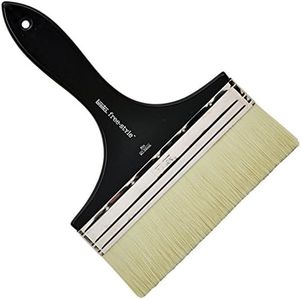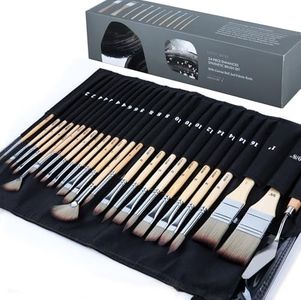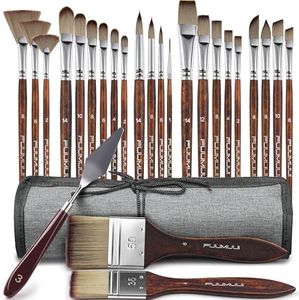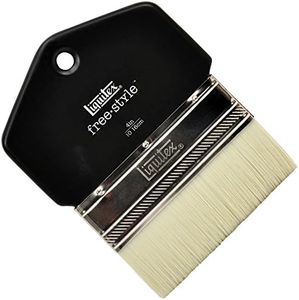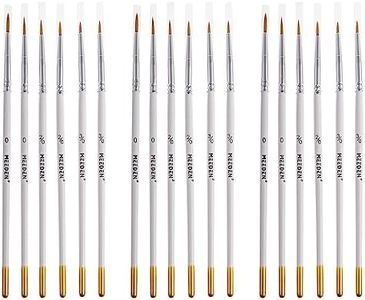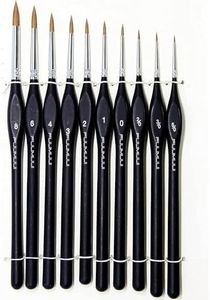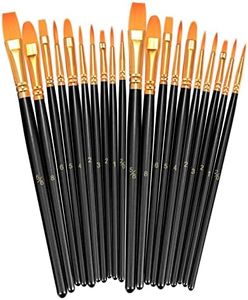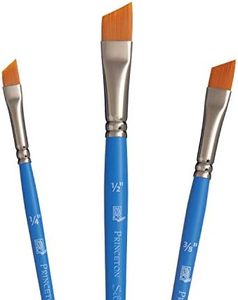We Use CookiesWe use cookies to enhance the security, performance,
functionality and for analytical and promotional activities. By continuing to browse this site you
are agreeing to our privacy policy
10 Best Acrylic Paint Brushes
From leading brands and best sellers available on the web.Buying Guide for the Best Acrylic Paint Brushes
Choosing the right acrylic paint brushes can make a big difference in your painting experience and results. The type and quality of brush you use affects how paint is applied and how your finished art looks. It's important to think about what subjects you want to paint, the size of your work, and your preferred painting techniques when making a selection. The best approach is to understand the major features of brushes so you can match them to your artistic needs.Brush ShapeBrush shape refers to the form of the brush head, such as round, flat, filbert, fan, or angular. Each shape serves a different purpose—round brushes are ideal for details and lines, flat brushes cover more area and make sharp edges, filberts offer a softer, oval tip for gentle blending, and fans are used for textures and effects. Choosing the right shape depends on what you plan to paint; for example, detail work requires smaller round brushes, while backgrounds might be easier with large flat brushes.
Bristle MaterialBristle material can be synthetic or natural. Synthetic bristles are common for acrylic paint since they withstand the harsher chemicals in acrylics and retain their shape longer, while natural bristles can be softer and better for oil paints. If you’re using acrylics, synthetic fibers—like nylon or polyester—are usually recommended. For painters who like varying effects, a mix of both can be useful.
Brush SizeBrush size is generally indicated by a number and refers to the width or diameter of the brush head. Smaller numbers mean finer brushes for detail work, while larger numbers mean wider brushes for broad strokes and coverage. For beginners or anyone unsure of their needs, it’s helpful to have a mix of sizes—small for detail, medium for general use, and large for washes or backgrounds.
Handle LengthHandle length can be long or short. Long handles are designed for easel painting where the painter works standing up and at a distance from the canvas, giving greater reach and movement. Short handles are better for table-top work, where control and close-up detail are needed. Your preferred painting position and workspace should guide your choice here.
Ferrule QualityThe ferrule is the metal part that connects the bristles to the handle. A good ferrule won’t rust, wiggle, or allow bristles to fall out. Solid, seamless ferrules made from nickel or brass are preferable. While you can’t test this without handling, higher quality brushes tend to have well-made ferrules and will last longer.
Spring and SnapSpring and snap refer to how well the brush regains its shape and responds to your pressure and movement. Good brushes for acrylic painting should bounce back and hold their form when pressed against the canvas. This allows for precise strokes and consistent results. If possible, consider trying out a brush by seeing how it returns to shape after bending; this is especially important if you like controlled, crisp lines.
